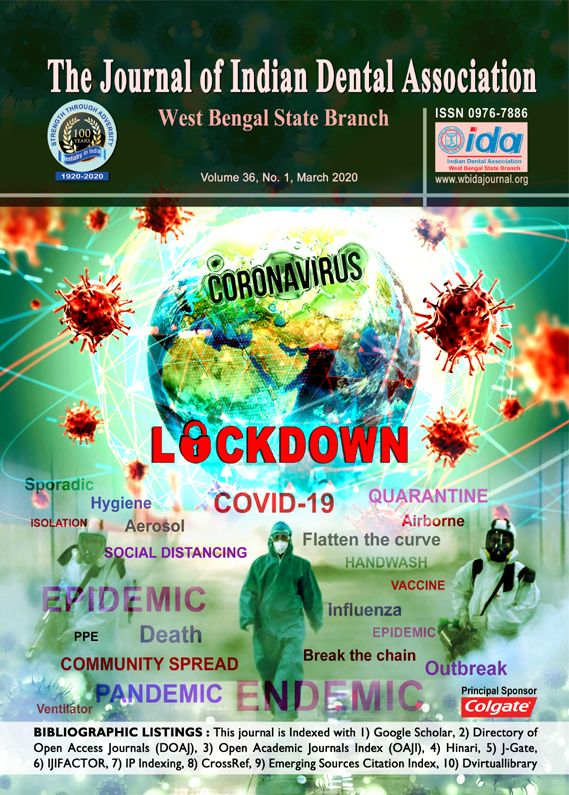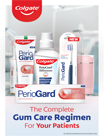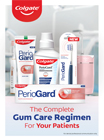Upcoming Events
1. Article Title.
2. Author Details.
3. Abstract.
4. Keywords.
5. Corresponding Author details.
March 2020
Volume : 36
No.: 1

Dr. Manisha Barman,Dr. Dharam Das,Prof. (Dr.) Amulya Barman
Abstract: To assess comparison of dental caries and periodontal health among adult diabetic & non – diabetic population of moradabad. A multi-phase simple random sampling technique used to survey in Moradabad city. Estimated sample size 500 patients i.e. 250 were Diabetic and 250 are Non- diabetic. A Type III clinical examination was carried out. Chi-square test was used to compare the proportion and mean values were compared using student t- test. ANOVA Was used for the group comparison and statistical analysis was done using SPSS version 15.0. The mean DMFT was 2.40 in Diabetic and 2.19 in Non-Diabetic. Statistically, the difference between two groups was significant (p<0.05). For all the sextants as well as for cumulative assessment, mean CPI of diabetics was higher as compared to non-diabetics. The difference between two groups was also significant statistically for all the sextants. As compared to non-diabetics, diabetics had higher mean LOA values. Statistically, the difference between two groups was significant (p<0.05). We conclude diabetics have an increased incidence of caries and the result of this study suggest that diabetes contributes to severity of periodontal disease.
Dr. Aaheli Banerjee,Dr. Aindrila Ghosh,Dr. Paridhee Jalan,Prof. (Dr.) Shabnam Zahir
Abstract: Diode laser is most frequently used in dentistry due to its reliability, versatility, convenience and simple set-up. A thick soft tissue covering the unerupted teeth is conventionally treated by surgical excision. Abnormal frenal attachment is very common and causes problems in function and aesthetics. It is managed by procedures like frenotomy and frenectomy. Lasers are currently becoming popular in various fields of dentistry and provide alternative to conventional scalpel procedures. This article highlights the use of diode laser in the treatment of operculectomy and frenectomy in children. The child was neither administered anesthetics, nor experienced any pain or bleeding during the procedure and was satisfied with the post operative healing.
Dr. Srabanti Nandy,Dr. Sanjit Lal Das,Dr. Uttam Kumar Sen,Dr. Arindam Karmakar,Dr. Ankan Kumar Maji
Abstract: Prosthodontic management for partially edentulous situations demand diverse treatment options. The long-span nature of the partially edentulous ridges complicate the senario due to unavailability of sufficient number of abutments to support the prosthesis and violation of stress mechanics which precludes the use of conventional removable and fixed partial dentures. This case report describes the management of a maxillary bilateral distal extension edentulous span with an extracoronal semi-precision attachment retained cast-partial denture as well as enhancing the esthetics and safe guarding functionality of remaining natural anterior teeth. The judicious use of attachments in such cases are beneficial as they are resilient and allow the prosthesis to distribute off axis loads away from the abutments to the underlying bone or tissues, generates cross-arch stability, esthetic, improved oral hygiene maintenance and economical thus alleviating both physiologic and psychologic upliftment for the patient
Dr. Surupa Dutta,Dr. Farha Nasim,Prof. (Dr.) Manoj Kumar Singh,Prof. (Dr.) Abhijit Chakraborty
Abstract: Periodontal plastic surgery procedures are prevalent to treat gingival recession. Currently the use of bioactive materials to achieve a better result has become a common practise. The platelet rich fibrin (PRF) membrane is recently one of the most researched biomaterials. Because of the various advantages of PRF, its use has been popularised these days. A systemically healthy patient with Miller's class I gingival recession was selected. After achieving the goals of phase I therapy, the conventional coronally advanced flap was done and PRF membane was positioned at the surgical site. The flap was stabilised in a coronally advanced position with the help of a sling suture. Post operative followups were taken at the interval of 1 month, 3 months and 6 months respectively. Result obtained thus showed that the use of PRF had no added advantage in root coverage. However, its role in post operative healing is further analysed, considering the biology of this biomaterial.
Dr. Moupriya Bera,Prof. (Dr.) Debaprasad Das,Prof. (Dr.) Anirban Bhattacharyya,Prof. (Dr.) Asim Bikash Maity,Dr. Suman Kar
Abstract: Aim: To evaluate the antimicrobial effcacy of nisin and calcium hydroxide with and without omeprazole against Enterococcus faecalis. Materials and methods: The antibacterial effect of the following experimental groups as intracanal medicaments (Group I- Ca(OH)2, Group II-Ca(OH)2 + Nisin, Group III - Ca(OH)2 + Nisin + PPI, Group IV- Ca(OH)2 + PPI) was evaluated using the agar diffusion test for a time period of 24 hours. The minimum inhibitory concentration (MIC) against E. Faecalis were also determined. Statistical analysis was performed using Kruskal-Wallis Test and chi-square test. Results: The antibacterial efficacy is detected by the formation of the zone of inhibition around the wells inoculated with the experimental groups. Groups I, II, III and IV showed inhibitory zones. The maximum diameter of 22 mm is obtained with group IV. The MIC values for the experimental groups I, II, III, and IV were 0.45%, 0.2mg/ml, 0.45%+0.03mg/ml, ≤0.01% respectively. Conclusion: The antimicrobial efficacy of omeprazole (PPI) combined with calcium hydroxide shows the maximum zone of inhibition and according to this study; this combination shows the most potent intracanal medicaments.
Dr. Saikat Sen,Dr. Adhiraj Ghosh,Dr. Chirantan Maity,Dr. Rajarshi Banerjee
Abstract: INTRODUCTION:Vascular malformations in the head and neck region present a difficult managementchallenge.The first line treatment for most venous malformations (VMs) and some lymphatic malformations is Sclerotherapy. Injection sclerotherapy using STS offers an effective treatment option when managing patients presenting with venous malformations (VM) in the oral cavity. A single treatment may be adequate for small lesions but the procedure may be safely repeated until a satisfactory result is obtained.Here we present a case report of venous malformation at the tip of the tongue with 3% sodium tetradecylsulphate (STS) and describe our experience.
Dr. Madhumaitri Patra,Dr. Md. Haroon Rashid,Dr. Md. Ashiqur Rahman,Dr. (Prof) Arindam Karmakar,Dr. (Prof.) Uttam Kr Sen,Dr. (Prof.) Ankan Kr Maji
Abstract: Flabby ridge is a common problem for edentulous maxilla. Here the hyperplastic fibrous tissue replaces the alveolar bone. This mobile tissue undergoes distortion by the force exerted during impression making can adversely affects the retention, stability and support of the prosthesis and the patient complains of looseness of the denture. So for the management of this problem adequate measures have to be taken. This paper presents three case reports for prosthodontic rehabilitation of patient with flabby ridge using different impression techniques.
Dr. Md. Haroon Rashid,Dr. Md. Ashiqur Rahman,Dr. Madhumaitri Patra,Dr. (Prof.) Uttam Kr Sen,Dr. (Prof) Arindam Karmakar,Dr. (Prof.) Ankan Kr Maji
Abstract: Insufficient clinical crown height pose problems to the prosthodontists during crown fabrication. To overcome this challenging situation we go for crown lengthening before tooth preparation for a crown (provisional as well as definitive crown) to enhance the retention form.Crown lengthening is a surgical procedure designed to increase the extent of the supra-gingival tooth structure.
Dr. Rajul Choradia,Dr. Pradip Giri,Dr. Tirthankar Debnath,Dr. Ashit Kr. Pal,Dr. Somen Bagchi
Abstract: Esthetic dentistry has seen an evolution in last few decades with the improvement in materials, techniques and conceptual understanding. In terms of clinical evaluation and management in esthetic smile designing, the role of periodontics has seen an uprise over the years. This has helped in achieving not only esthetic but also biologic and functional precision in esthetic dental treatment. Periodontal treatment rendering to better esthetics comprises the establishment of health of the tissue along with a physiologic form and functionality. A variety of esthetic periodontal procedures have been developed which include correction of defects like gingival recession, osseous defects with or without formation of black triangles. Furthermore, correction of the relationship of the teeth and gingiva in frame of the lips has ensured more predictable and esthetic results in conjunction with restorative procedures. Hence, a precise implementation of these procedures in the esthetic management of the dentition is mandatory for better clinical outcomes. This article aims at emphasizing on the factors involved in esthetic evaluation and treatment goals of esthetic periodontal procedures
Dr. Md. Ashiqur Rahman,Dr. Md. Haroon Rashid,Dr. Madhumaitri Patra,Dr. (Prof.) Sanjit Lal Das,Dr. (Prof.) Uttam Kr Sen,Dr. (Prof.) Ankan Kr Maji
Abstract: Increasing life expectancy, age-related reduction in adaptability and progressive severe mandibular resorption, all add to the difficulty in achieving prosthetic success. The conventional mandibular denture is usually less stable than the maxillary one and successful treatment involves the development of stable mandibular denture. Several methods considering physiologic function with an objective to enhance denture retention, stability and comfort during mastication have been developed since many decades. Piezography method is a neutral zone technique that utilizes phonetics to record the potential denture space. It is because a person swallows up to 2400 times per day and during the entire swallowing teeth comes into contact less than second which can be sum up to less than 17.5 minutes per day. Since, a person speaks more than he involves swallowing, we can follow phonation method to fabricate dentures for more stable denture prosthesis.
Dr. Pradip Kumar Giri,Dr. Priyanka Yadav,Dr. Tirthankar Debnath
Abstract: Over the years WHO giving stress to improve the oral hygiene thereby we can prevent the oral diseases and have the goal to achieve total control of oro-facial diseases. In that context first WHO slogan was “oral health forall by 2000” but we could not achieved.Next goal set for 2020 but the situation is thatwe will not achieve that also by time period. All the acquired oral cavity problem due to accumulation of plaque. We should not forget the fact that we cannot stop the source that is the food intake through mouth, which remains the biggest biological limitations in day to day effective plaque control.On this perspective emphasis on maintenance of oral hygiene by scientific approach can only be possible solution to achieve the WHO goal. Hence, this Review Article highlights the importance of oral health education and motivation.
Dr. Sohini Banerjee,Dr. Chhanda Biswas,Dr. Tirthankar Debnath,Dr. Pradip Giri
Abstract: Frenum is the thin mucous membrane fold connecting the lips and the tongue to the mucosa and periosteum. Ankyloglossia or tongue tie is often associated with short, thick lingual frenum resulting mainly in limited tongue movements along with other complications. This case report will highlight about the occurrence of ankyloglossia or tongue tie in a patient and its effective management.
Dr. Sangita Show,Dr. Pradip Kumar Giri,Dr. Tirthankar Debnath,Dr. Ashit Kr. Pal
Abstract: The search for newer and efficient treatment modalities in the field of Medicine has always been on a rise, Dentistry being no exception to this trend. Extracorporeal shock wave therapy (ESWT) has been widely used in medical practice for management of various orthopaedic, musculoskeletal disorders, urolithiasis and cholilithiasis. The efficacy of extracorporeal shock wave therapy (ESWT) on enhancing bone regeneration, inducing angiogenesis, bactericidal effect, stimulation of osteoblasts, fibroblast cells and enhancing bone morphogenic protein (BMP) expression are noteworthy. The present paper reviews and explores the possibilities of application of (ESWT) in the field of Periodontics as well as inculcating its beneficial properties in improving treatment outcome.
Dr. Riktam Kundu,Dr. Pradip Giri,Dr. Tirthankar Debnath
Abstract: Periodontal microsurgery is one of the promising advancements, in the field of surgical periodontal therapy. In the field of dentistry, Apotheker and Jako first introduced the microscope in 1978. Shanelec and Tibbetts can be considered as pioneers in periodontal microsurgery. Periodontal plastic microsurgery incorporates the use of a surgical microscope in an attempt to increase visibility, thereby minimizing soft tissue trauma and enhancing the surgical results. Periodontal microsurgery has added a new dimension to different techniques such as guided tissue regeneration, root coverage, gingival augmentation, hard tissue augmentation, osseous resection, cosmetic crown lengthening etc. The introduction of loupes and surgical operating microscopes along with the micro-instruments have driven the periodontal surgery to a new level of sophistication and have made the microsurgical approach a reality.
Prof. (Dr.) Amal Kumar Chakrabarti,Dr. Aman Sharma,Dr. Vineeth B,Dr. Md. Saba Karim,Dr. Soumen Khan,Dr. Hussain Lokhandwala
Abstract: Open bite is a developmental or an acquired malocclusion where there is lack of vertical overlap of the upper and lower teeth. The treatment modalities to correct openbite depend on proper diagnosis and treatment planning. Successful treatment of an anterior openbite malocclusion is considered one of the most challenging areas in orthodontics. A 16 year old female patient with an anterior open bite was treated by extraction of lower 1st permanent molars and upper 1st premolars, followed by MBT mechanotherapy. The therapeutic goal was to correct the malocclusion and to achieve a harmonious soft tissue profile. At the end of the treatment, the patient had her molars in Class II and canine in Class I occlusion, normal overjet and overbite, and stability during the post-treatment period.
Dr. Shahnaz .,Dr. D. Rambabu,Dr. Savan Shetty,Dr. S. Nisha,Dr. Amit De
Abstract: Gingival recession associated with dentinal hypersensitivity is one of the commonest problem reported to a dentist. The treatment of choice for such cases should address biological treatment as well as patient’s satisfaction. Semilunar coronally repositione flap (SLCRF) for root coverage is used for isolated gingival recession in maxillary anteriors area. This paper reports the treatment of gingival recession associated with sensitivity. The procedure involved utilization of semilunar coronally repositioned flap procedure. The semilunar coronally repositioned flap procedure successfully covered the recession and reduced the patient’s complaint of hypersensitivity and enhanced the esthetics too.












